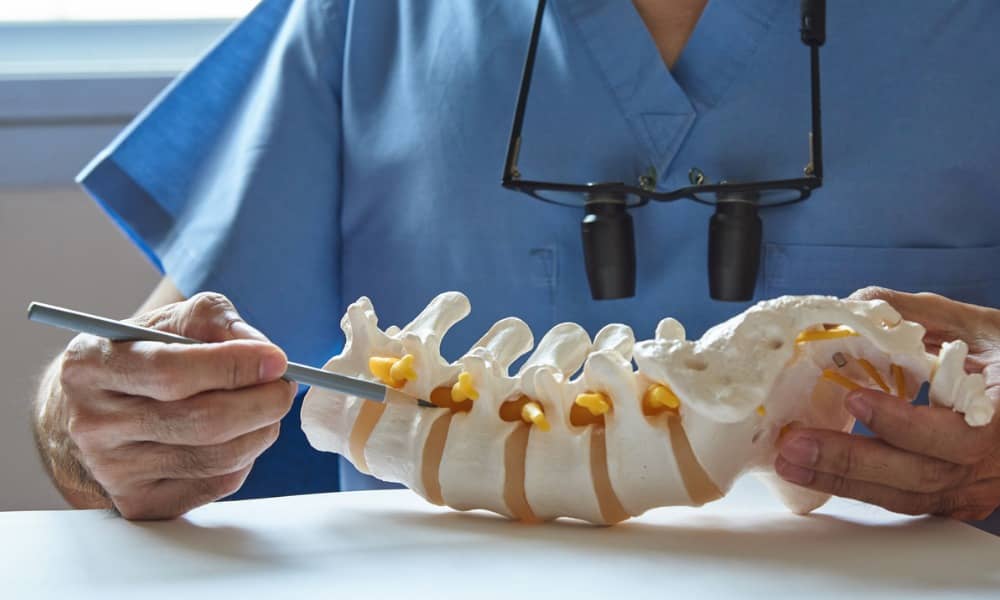
What is Facet Joint Disease?
Facet joint disease or facet joint syndrome is a form of osteoarthritis that attacks the facet joints along the back of your spine. For a few people, facet joint syndrome can be caused by a trauma to the facet joints such as an athletic injury or a car accident.
How common is facet joint disease?
In a recent study of 500 patients, who were complaining of back pain, it was found that painful cervical facets were identified in 55% of patients with neck pain, 42% of patients with thoracic pain, and 31% of patients with low back pain(1).
What is the function of facet joints?
Facet joints guide and constrain the motion of the vertebrae, while also enabling the transmission of the loads placed on the spine. Each level of your spine serves as a Three-Joint-Complex that includes a pair of facet joints, and an intervertebral disc. They provide flexibility and the stability to the spine(2). When your facet joints are weakened, your discs may be stressed and begin to rupture, vertebrae may start to slip, and your spine may lose some of its structural integrity as it slowly degenerates.
What are the symptoms of facet joint disease?
The type of pain you experience from facet joint disease is determined by the location of the injured facet joints along your spine. If the facet joints in the neck are inflamed, you may experience radiculopathy or radiating pain and numbness along your neck, between your shoulders, down your arms, and to your hands. If the facet joints in your lower or lumbar spine are stressed, the pain may radiate along your hips, thighs, legs and down to your feet.
Pain symptoms may increase after long periods of inactivity such as sitting at a desk too long or standing in line.
What are the treatments for facet joint disease?
Your facet joints may need rest to heal the inflammation that is causing the pain of facet joint syndrome. Taking it easy for a few days can work wonders by giving the tiny joints some rest. Dr. Melamed may suggest conservative physical therapy to improve your posture and modify the way you lift objects, turn or rise from a chair.
To relieve pain, Dr. Melamed will steer you away from opioid-based medications preferring safer, less addictive solutions such as non-steroidal anti-inflammatories, acupuncture, TENS electrical stimulation units, epidural treatments, and facet joint injections with nerve ablation.
He may suggest that you get your body moving with low resistance water therapy, walking and yoga. You may also find that with a few simple changes to your diet, you can lose weight and naturally fight inflammation.
The anatomical name for facet joints sounds funny, zygapophysial. However, there is nothing comical about the pain that often rises from these nerve-rich joints. Some patients may have pain that will not respond to non-surgical treatments. Dr. Melamed may suggest additional tests and carefully review the full range of surgical options including several minimally invasive microdecompression surgeries. All of Dr. Melamed’s surgical treatments are opioid-free during the operation and in recovery to prevent the risk of accidental drug addiction.
Find out if your back pain is caused by facet joint disease.
Click on the “Make An Appointment” button at the top of this page, or call Dr. Melamed’s office for more information. Call us at 424-21-SPINE.
1 “Prevalence of facet joint pain in chronic spinal pain of cervical, thoracic and lumbar regions”; L. Manchikanti, M. Boswell; BMC Musculoskelet Disord. 2004; 5: 15. Published online 2004 May 28. doi: 10.1186/1471-2474-5-15
2 “Spinal Facet Joint Biomechanics and Mechanotransduction in Normal, Injury and Degenerative Conditions”; N. Jaumard, W. Welch, B. Winkelstein; J Biomech Eng. 2011 Jul; 133(7): 71010–NaN; Published online 2011 Aug 2. doi: 10.1115/1.4004493



